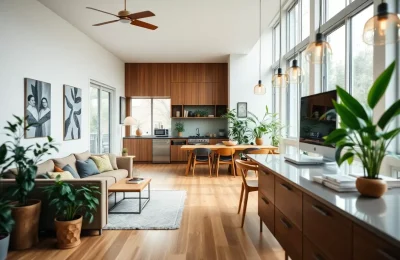
Finding an eco-friendly roofing option doesn’t need to be complex – all it requires is some consideration of budget and commitment towards maintenance.
Green roofs can also provide habitats for local wildlife. By planting native species on your roof, you can provide shelter to bugs and other animals who need a place to call home.
1. Energy-Efficient Shingles
Now that we’ve gone green with cars, appliances, and technology, it makes perfect sense to do the same with our roofs. Innovative roofing manufacturers have discovered ways to use eco-friendly materials that not only save the environment but also save energy at the same time.
Some shingles have reflective components to keep roofs cooler, reducing energy use while relieving stress from HVAC systems and saving homeowners money on their heating and cooling costs.
Green roofs provide another viable option, using layers of plants to absorb heat and lower the Urban Heat Island effect, according to the Green Roof Resource Council. A typical green roof consists of several layers including an underground root barrier to protect buildings from aggressive roots, growing medium and vegetative layer – and due to nature’s process of water absorption and release by plants it may even decrease wear on roof membranes and extend their service lives!
2. Single-Ply Thermoset
Single-ply thermoplastic membranes are an increasingly popular choice among homeowners looking for green roof benefits. Constructed from factory fabricated sheets welded together, single-ply roof membranes offer durability and energy efficiency – lasting over three decades with proper care! UV and heat resistance as well as flexible installation methods including ballasted, fully adhered or mechanical attachment are some of the advantages.
Light-colored single-ply membranes such as EPDM and TPO are certified by both ENERGY STAR and the Cool Roof Rating Council, helping reduce cooling costs for buildings by significantly. Furthermore, their low slope roof systems can even be walked on, making maintenance personnel’s lives much simpler.
Thermoset membranes such as PIB and CSPE are fully cured during production and cannot be reshaped or melted, making them watertight and nonporous. One study shows PIB reduced building temperatures by 40% reducing air conditioning costs significantly.
3. Thermoplastic
Green roofs are designed to incorporate vegetation, water retention mats, filter fabric and root barriers. They may either be pre-grown or planted on site in situ; typical plants for green roofs include shallow-rooted succulents such as sedum as well as low-growing bushes and trees.
Green roof plants absorb pollution and greenhouse gasses (GHGs), helping reduce energy costs by acting as thermal insulation and providing thermal warmth retention. Furthermore, they create an effective cooling effect during summer by decreasing heat transfer and solar radiation.
Jensen emphasizes the primary challenge with green roofs is leakage; however, using waterproofing materials, selecting appropriate plants for growing environments and adhering to stringent construction standards has significantly reduced leak issues. Low cost electronic monitoring grids may also help locate any potential leaks.
Wind uplift is another problem with green roofs that needs to be taken seriously, which can cause structural damage if not properly designed and constructed. A solution would be using a scrim-reinforced membrane capable of withstanding both mechanical and thermal stresses.
4. Shakes and Shingles
Green roofing provides homeowners with multiple solutions for combatting climate change or cutting energy costs. From reflective cool roofs that reduce temperatures by reflecting sunlight to energy-saving shingles and metal roofing that provide insulation, these eco-friendly materials help homeowners reduce carbon emissions while saving money over time.
Shakes and shingles made of wood can be considered eco-friendly if sourced from sustainable sources; however, they don’t compare as favorably to clay tiles or other roofing materials because the timber used to craft them often requires long journeys before reaching its final destination.
Green roofs are rooftop gardens adorned with plants such as grasses and flowers, designed to withstand rain or drought while offering numerous environmental advantages. Green roofs can help cool cities by absorbing excess heat, mitigate urban heat island effects, absorb rainwater to prevent runoff, filter pollutants out of air or water and offer environmental benefits that go far beyond aesthetic appeal.










